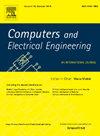MFYOLO: Improved UAV lightweighting algorithm for wind turbine blade surface visibility damage detection
IF 4
3区 计算机科学
Q1 COMPUTER SCIENCE, HARDWARE & ARCHITECTURE
引用次数: 0
Abstract
Ensuring the structural integrity of wind turbine blades in alignment with dual-carbon objectives is crucial for optimizing wind power generation. To address the challenge of identifying small and complex defect features while maintaining a lightweight and efficient algorithm, this study introduces an innovative image input methodology. This approach combines the original image, a super-resolution enhanced image, and a defect-magnified image, resulting in significant improvements in average accuracies (mAP50 and mAP50–95) of 94.7 % and 83.3 %, respectively. The proposed lightweight algorithm, MFYOLO, employs multilayer aggregated depth-separable convolutions for deep feature extraction, alongside spatial pyramid pooling to capture multi-scale details and reduce feature map dimensionality. Dynamic convolution and a generalized reverse bottleneck structure adjust the size and sampling strategy of the convolution kernel, while self-attention mechanisms and convolution module grouping effectively reduce the computational burden. Knowledge distillation further enhances MFYOLO's performance without increasing the parameter count. Compared to the benchmark, memory usage (RAM), computational demand (GFLOPs), and parameter count (Params) are reduced by 48.2 %, 47 %, and 48.9 %, respectively, while maintaining stable mAP50 and significantly improving mAP50–95 and accuracy. The method achieves 156 frames per second (FPS), with robust performance validated on multiple datasets.

求助全文
约1分钟内获得全文
求助全文
来源期刊

Computers & Electrical Engineering
工程技术-工程:电子与电气
CiteScore
9.20
自引率
7.00%
发文量
661
审稿时长
47 days
期刊介绍:
The impact of computers has nowhere been more revolutionary than in electrical engineering. The design, analysis, and operation of electrical and electronic systems are now dominated by computers, a transformation that has been motivated by the natural ease of interface between computers and electrical systems, and the promise of spectacular improvements in speed and efficiency.
Published since 1973, Computers & Electrical Engineering provides rapid publication of topical research into the integration of computer technology and computational techniques with electrical and electronic systems. The journal publishes papers featuring novel implementations of computers and computational techniques in areas like signal and image processing, high-performance computing, parallel processing, and communications. Special attention will be paid to papers describing innovative architectures, algorithms, and software tools.
 求助内容:
求助内容: 应助结果提醒方式:
应助结果提醒方式:


